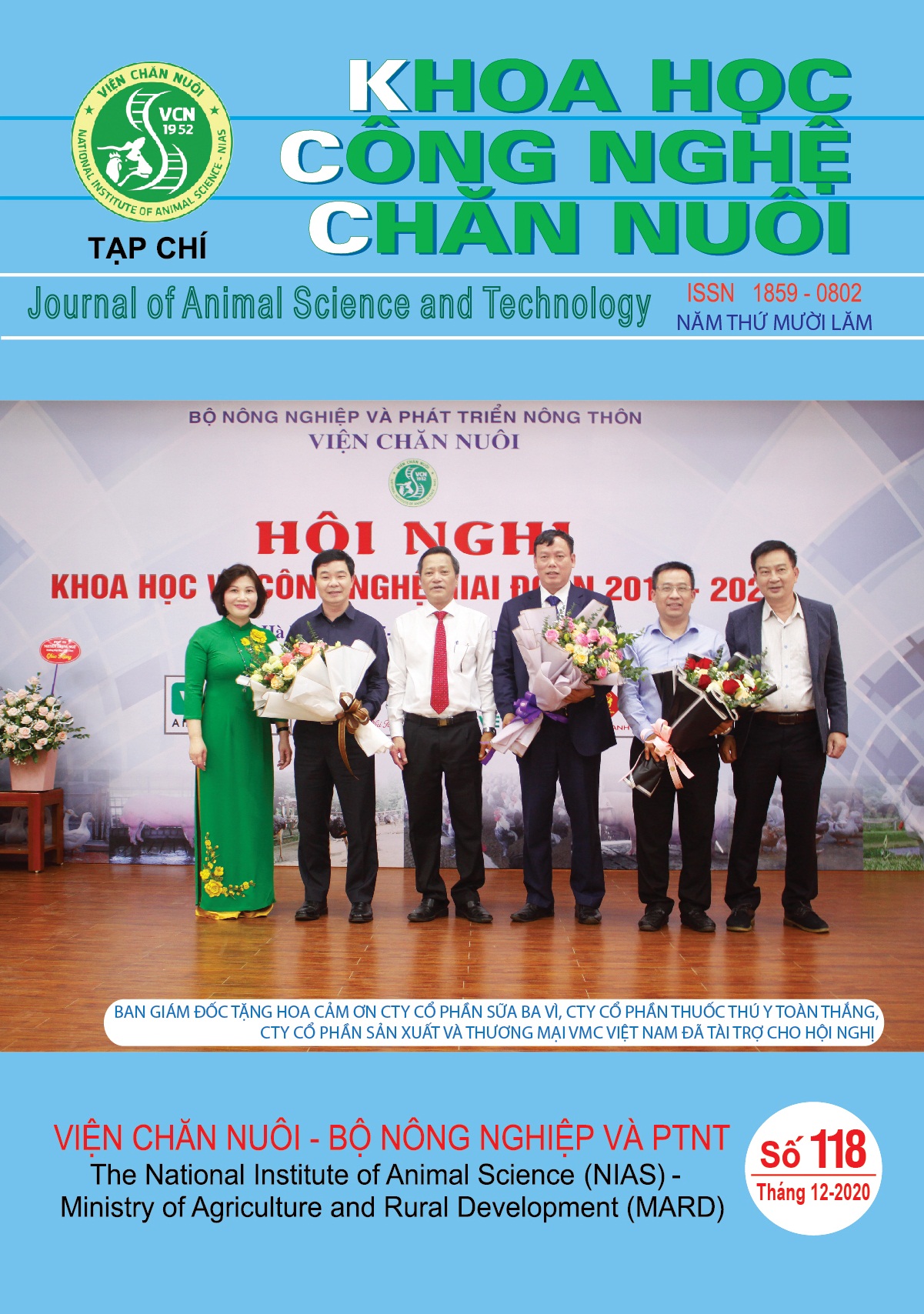Selection for stabilizing productivity of V27 super meat duck line
The selection for stability of production on meat-type V27 line was conducted from the 2016 to 2019 at VIGOVA duck breeding farm. Selection method based on estimates of breeding values (EBV) by best linear unbiased prediction (BLUP) in 4 generations with 2 traits included: body weight at 7- weeks- old and egg production at 42-weeks-old. Estimation of genetic parameters by restricted maximum likelihood (REML) method, estimates of breeding values by BLUP and multi-trait animal models on PEST 4.2.3 and VCE 6.0.2 software. Genetic and phenotypic trends were analyzed by linear regression on Excel 2016 software. The results showed that corresponding heritability coefficients of body weight at 7-weeks-old, egg production at 42-weeks-old and egg weight at 38 to 42 weeks-old were 0.42, 0.31 and 0.59. Genetic correlation (rG) between body weight and egg production at 42 weeks of age was -0.06; between body weight and egg weight at 38 to 42 weeks of age was 0.56; between egg production at 42 weeks of age and egg weight at 38 to 42 weeks of age was 0.03. Body weight at 7 weeks of age was not significant change while egg production increased 0.81 eggs/generation. Body weight at 42 weeks of age on male and female ducks were 3663.00 – 3682.67 g and 3190.00 – 3242.74 g. Laying age of the V27 line were 166 – 168 days of age, egg production/42 laying weeks were 211,33 - 212,38 egg/female, FCR/10 eggs 3.60 – 3.63 kg, egg weight were 88.16 – 88.62 g, fertility and hatchability were 92.40 – 92.69% and 73.99 – 74.27%, respectively.

